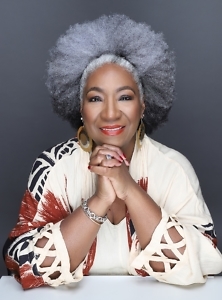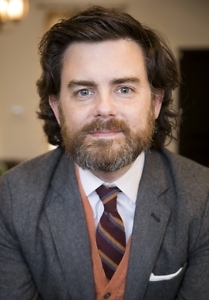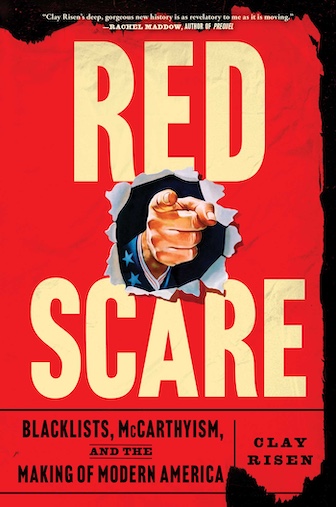Love and Other Art Forms
Veronica Kavass talks with Chapter 16 about the provocative relationship between love and art
In her ambitious new book, Artists in Love, Nashville writer Veronica Kavass explores the romances that helped steer the lives and work of some of the most influential artists of the twentieth century. The result is a perceptive, thought-provoking exploration of love’s impact on creativity and how it has, by extension, helped to shape art history. “Would we have seen Max Ernst’s deserts, his full spectrum settings, without [Dorothea] Tanning by his side, enthusiastic to live and paint out in the middle of nowhere, surrounded by skulls?” Kavass asks.
From Wassily Kandinsky and Gabriele Münter to Ilya and Emilia Kabakov, the twenty-nine stories range from heartening affirmations of enduring love and artistic collaboration to outright Shakespearean-esque tragedy. But as Artists in Love demonstrates, inspired works of art were conceived no matter the arc of the love story, and many are beautifully displayed throughout the book alongside intriguing photographs of the artist-couples.
Artists in Love is already getting some notable, well-deserved attention. It is Vanity Fair’s “Hot Type” pick for November, and The Huffington Post put up a slide show from the book to mark its publication.
Prior to her appearance at Parnassus Books in Nashville on November 11, Kavass recently answered questions from Chapter 16 via email:
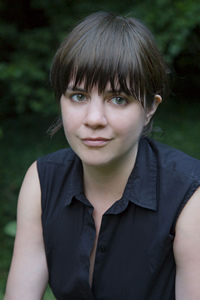 Chapter 16: Let’s start big. Compiling a comprehensive collection of stories about famous artists and the love stories that helped shape them—especially one that includes an anthology of related artwork—is no small feat. What inspired such an undertaking?
Chapter 16: Let’s start big. Compiling a comprehensive collection of stories about famous artists and the love stories that helped shape them—especially one that includes an anthology of related artwork—is no small feat. What inspired such an undertaking?
Veronica Kavass: This is something that had been brewing in the editor’s mind for years. I had worked with her on another, quite different book [The Last Good War: The Faces and Voices of World War II, with photographs by Thomas Sanders]. When she presented me with the challenge of this subject matter, I was intrigued and experimented with it. The publishers liked my slant, and a contract was signed. Then I was left alone with it for several months.
This word is overused, but it all really happened “organically.” I read a lot, started writing short stories, selected artwork based on the focus in the stories. The long and exhausting part of this compilation involves image permission. I had an idea of how difficult that was going to be, but once I was in the thick of it, I was in this there-is-no-turning-back-but-what-the-hell-is-in-front-of-me nightmare! I guess it felt kind of like a romantic relationship in itself: honeymoon period of discovery, followed by sobering moments of reality, compromise, the challenge of commitment, and then…. I have no idea what phase I am in right now. But it’s certainly the calmest, despite the fact that it is all public right now.
Chapter 16: Why these twenty-nine couples and no more, no less? Did your list grow or shrink as Artists in Love developed?
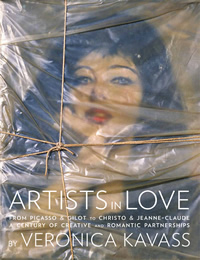 Kavass: It started with a much longer list. And I did, in fact, write forty-eight stories. But image permissions, layout, and other logistics resulted in editing that list. For example, no way in hell was Carl Andre going to grant us permission to use his images (which I explain in the intro). So that was that! (I worked pretty hard on that story, by the way. It was a difficult loss). The list grew and then shrank. Like a lot of considerably exciting things in life.
Kavass: It started with a much longer list. And I did, in fact, write forty-eight stories. But image permissions, layout, and other logistics resulted in editing that list. For example, no way in hell was Carl Andre going to grant us permission to use his images (which I explain in the intro). So that was that! (I worked pretty hard on that story, by the way. It was a difficult loss). The list grew and then shrank. Like a lot of considerably exciting things in life.
Chapter 16: Were you intimidated by retelling the love stories of living artists, such as Bruce Nauman and Susan Rothenberg, who can and most likely will read your book?
Kavass: Yes, I was. For the sake of being able to actually write the stories about living artists, I had to do a mental exercise where I would remind myself that I’d probably never talk to someone like Nauman about the story. It was intimidating but not paralyzing. I think I will continue to write about people and the work they do during their lifetimes. So I am able to distance myself from their perspective.
Chapter 16: Which essay(s) cost you the most sleep? Which one(s) were the most humane?
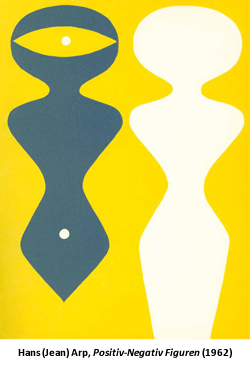 Kavass: Hmmm. I had the hardest time writing about the well-known couples. Pollock and Krasner, Kahlo and Rivera. They have been Hollywoodized, and thus I was dealing with trampled ground. At other times, for reasons I didn’t quite understand, stories would emerge very naturally. I pretty much got no sleep for only a couple of the months that I worked on this.
Kavass: Hmmm. I had the hardest time writing about the well-known couples. Pollock and Krasner, Kahlo and Rivera. They have been Hollywoodized, and thus I was dealing with trampled ground. At other times, for reasons I didn’t quite understand, stories would emerge very naturally. I pretty much got no sleep for only a couple of the months that I worked on this.
Chapter 16: You don’t tell only the tales of “tortured” artists and tragic relationships. You also honor the stories of artists who were, for lack of a better phrase, well-adjusted and content. The stories of Josef and Anni Albers, Leon Golub and Nancy Spero, or Christo and Jeanne-Claude offer a welcome counterbalance to the fraught stories of Frida Kahlo and Diego Rivera, Willem and Elaine de Kooning, or Lee Krasner and Jackson Pollock, for example. Was this decision part of a deliberate plan for the book?
Kavass: It was more accurate than deliberate. Deliberate accuracy. I certainly didn’t approach couples like the Bechers and think that their lack of drama would subtract from the story. I was grateful for it. There were partnerships and collaborations that worked very well, where there wasn’t an emphasis on incompatibility, betrayal, etc. Those partnerships present the ideal bond, one that was crucial for artists who worked together as a single unit.
That said, there is a major draw to the stories about the clashing of egos, the heartbreak, all of that. Although I am also attracted to those types of stories, I don’t receive much satisfaction in relishing it as a writer. For example, I could have painted de Kooning out to be way more of an asshole, but I didn’t feel like beating that dead horse for the sake of a juicy read. I mean, this book is far too large to be a beach book anyway.
Chapter 16: Did you find that you looked at your own life differently while steeped in the research and writing of a particular story?
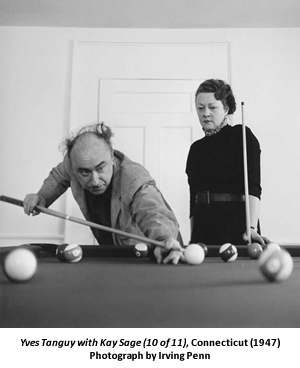 Kavass: Sometimes. For a majority of writing this project, I sat at a desk that offered a view of an under-the-sea mural in a playground. I’d sigh a lot, wishing I was looking at the Eiffel Tower instead. That was one way I looked at my life differently. Or when I read excerpts of Eva Hesse’s journals, I felt an eerie connection to the way she thought. She reminded me so much of myself (and my own neurosis). Turns out we have the same exact birthday, but that probably doesn’t mean anything. (Sorry to all you astrology fans!) More than anything, I thought about how much I love collaboration. A different energy and strength evolves, one that is more fun and conducive to adventure than working as a lone soldier.
Kavass: Sometimes. For a majority of writing this project, I sat at a desk that offered a view of an under-the-sea mural in a playground. I’d sigh a lot, wishing I was looking at the Eiffel Tower instead. That was one way I looked at my life differently. Or when I read excerpts of Eva Hesse’s journals, I felt an eerie connection to the way she thought. She reminded me so much of myself (and my own neurosis). Turns out we have the same exact birthday, but that probably doesn’t mean anything. (Sorry to all you astrology fans!) More than anything, I thought about how much I love collaboration. A different energy and strength evolves, one that is more fun and conducive to adventure than working as a lone soldier.
Chapter 16: What insights about being an artist and/or being in love did you glean?
Kavass: I gleaned that both sectors are unpredictable and, occasionally, rewarding. But they’re mostly just a lot of work. And both areas, even if you have a solid partner, can be very isolating. In a way, I think I am drawn to love stories because I am trying to understand my own solitude. Roland Barthes’s A Lover’s Discourse is one of my favorite books to just pick up now and then. While working on this project, I read from it nearly every day. It breaks down the ideas of absence, adorable, waiting, dependency, silence, night, gossip, will-to-possess, and on and on. It doesn’t break it down in a way that makes it necessarily easier to understand, just in a way that makes me feel better about not understanding it.
To answer the question, gaining insight into both sectors by way of working on this project made me feel more comfortable with all the aspects that disturb me about love and art. That sounds weird—being more comfortable with being disturbed by something. But the advantage is that it gives me to courage to keep exploring both realms.
Chapter 16: Any visions of another book dancing in your head?
Kavass: Yes! It is one that hits much closer to home. In fact, the idea of “home” is intrinsic to it. It involves a few different settings, Nashville being a major one. One thing I know for a fact is that it will be much, much smaller in size and lighter in weight than Artists in Love.
Veronica Kavass will discuss Artists in Love on November 11 at 2 p.m. at Parnassus Books in Nashville.
